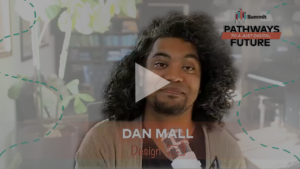Oil and Water
Trying to operate in a “fee for service” and “population heath” world can look like trying to mix oil and water. What are integrated healthcare systems doing to be financially successful while advancing quality and service, as they take on more capitated lives manage in this mixed model. How are you engaging frontline clinicians in this effort?




We are asking ourselves this same question. Our model is explicitly capitated, yet our flagship service lines are growing.
Our system has:
1. Engaged key physician leaders in leading service lines of each hospital to increase quality and patient satisfaction, and decrease cost.
2. Bring key physicians together from around the system in regular meetings to compare quality, patient experience, and cost. These teams meet monthly and have full support of system level finance, quality, and IT analysts to acquire data, disseminate best practices, and design system level changes.
We also have discussed directing patient flow more formally based and efficiently to direct patients to parts of the system with the highest quality, lowest wait times, and lowest costs. This has not been implemented. We are hoping that this type of physician engagement can lead to horizontally integrating care by disease state which could improve quality and reduce unnecessary care.
How to navigate with our feet in two different canoes? That’s the dilemma that we confront. We need to continue and grow our group to manage population health to grow our fee for service volumes and keep those physicians busy doing what they would like to do. The bigger the net the more fish we will catch.
A challenging question indeed. The consensus seems to be improved quality and reduced complication for our patients is not only good for them, but is good for the organization in most cases regardless of the payment model. Focusing in quality and safety improvement should lead to success.
In my opinion, you can only find out how to mix oil and water when doing an experiment. At Radboudumc we’re doing an experiment on population based payment for Parkinson patients in a well defined area. We’ve set this up as an experiment together with the two largest health insurers in our region and we’re learning together. We’re meeting on a regular basis and discuss the outcomes as well as the costs in the whole system (thus also outside our hospital). We’re supported in this learning by health economists from ErasmusMC and Radboudumc. Our biggest challenge is developing the right outcome indicators for population based payment. E.g., we thought the amount of hip fractures would be a critical indicator, but it seems the it is not sensitive enough. We’re still in the experimental phase and did not move to population based payment completely.
On the way, we’re learning interesting stuff. E.g., that out clinic patients benefit more from treatment by our ParkinsonNet physical therapists
then regular physical therapists. Only by sharing knowledge between the health insurer and us we were able to make this visible and publish the result in Lancet Neurology (https://www.parkinsonnet.nl/media/15339055/editorial_lancet_neurology.pdf)
One possibility to increase the quality and treatment outcome while decreasing the cost is to integrate all the stakeholders from the patient and preventive path and share the savings and risks. In the ideal system all is included from the preventive services, healthcare and rehabilitation costs, medication, to the cost of sick-leave etc. No room is to be left for part-optimization. We need to put more effort in prevention and health-promoting activities and utilize new innovative technologies and ways to deliver services. I think that primary healthcare and end of life care are easier to redesign. When it comes to demaniding special health care the ideal might be specialised centers of excellence providing those services in a patient-centered high-quality but still cost-effective way. I may be a dreamer but I think most frontline clinicians want to do their best in the puzzle. The incentives should be connected to the outcome and cost of the whole patient path of the disease or the well being of a population which is more difficult to define.
So, we have started doing mini-pilots with innovative ways to service the community like doing telephone visits, virtual visit and group visits. As we work in a fee for service model these types of visits work well in a population health/value based world but in our current fee for service world we’re unable to bill for many of these services however we are learning from them and soon we’ll understand if there’s benefit in other ways such as cost savings programs or reduced ED visits. Time will tell……….
I know it is a tricky question but I am not sure both models contradict each other. Still, you can have a capitated budget as an organization but you can pay your frontliner clinicians the way you think appropriate i.e. fee for service.
This a challenging dilemma that many organizations (in the US) are facing today. Unfortuneately, as Aldo says, you have to paddle both canoes at present. We are developing population health strategies preparing for a completely capitated model of the near or far future while having to live and thrive in the fee for service present. Many of our primary care colleagues are advancing the population health strategies of our organization and we are starting to engage our service line leaders to assist in this endeavor with the full understanding that a majority of our payments and business is based on fee for service.
A similar question and interesting analogy is “how does a company innovate and disrupt its own business when it needs to run its current business optimally to keep producing a very small margin?” Somehow, we have to do both.
Jody